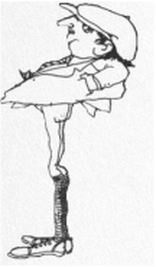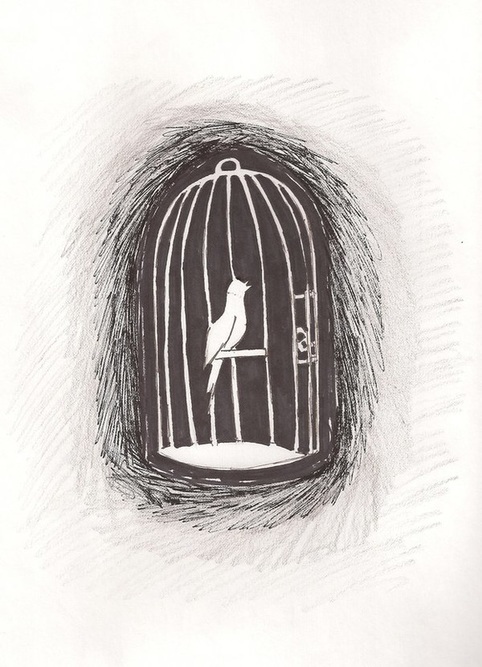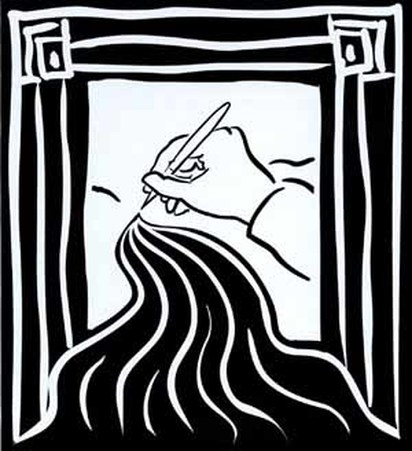"Literacy is about building confidence… Trying to understand what the story is, like the story of a poem.”
~Kyra Fries (Middle School English Teacher)
~Kyra Fries (Middle School English Teacher)
Poetry in MotionIn this Activity: Students will listen to a poem and act out/mime with their bodies what they hear.
Literacy: Poetry Why?: Embodiment of a poem and a look at how kinesthetic and body awareness can help promote young people's understanding of the material being presented to them. Educational Benefits: - Embodiment of a poem - Feel the movement and rhythm of a poem in the student’s bodies Activity Length: 20-30 minutes Ages: First Grade - Fifth Grade |
How? |
PREPARATION:
INTRODUCTION: The teacher will need to introduce this activity to the students- so the students know that they will need to act out, with their bodies, what is being said in the poem
|
Common Core
|
First Grade RL.1.10: With prompting and support, read prose and poetry of appropriate complexity.
|
Second Grade
RL.2.4: Describe how words and phrases supply rhythm and meaning in a poem or song. |
Third Grade
RL.3.5: Refer to parts of poems. |
Fourth Grade
RL.4.5: Refer to the structural elements of poems when writing or speaking about a text. |
Fifth Grade
RL.5.5: Explain how stanzas fit together to provide the overall structure of a poem. |
Assessment |
-> How did the students participate?
-> How did the students understanding of the poem change during the second reading? |
Modifications |
-> Split them into groups.
-> Have each group pick or write a poem. -> Have the students pick one person to read the poem out loud and have the other members act it out. |
Additions for Third Grade to Fifth Grade |
-> Pick a certain style of poem and play the activity.
-> Next have them split into groups. -> In their groups, have them write a new poem in the style of the first poem. -> Come back and have one person read it out loud and have the rest of the group act it out. |
Examples of Poems

“Something Missing”
Shel Silverstein
I remember I put on my socks,
I remember I put on my shoes.
I remember I put on my tie
That was printed
In beautiful purples and blues.
I remember I put on my coat,
I look perfectly grand at the dance,
Yet I feel there is something
I may have forgot-
What is it? What is it?...
This is a good example of a miming poem. It allows young people to physically interact in the poem. There are a few explicit instructions, such as "putting on socks", and some more vague directions, "I look perfectly grand at the dance". It allows for imaginative interpretations of text.
Shel Silverstein
I remember I put on my socks,
I remember I put on my shoes.
I remember I put on my tie
That was printed
In beautiful purples and blues.
I remember I put on my coat,
I look perfectly grand at the dance,
Yet I feel there is something
I may have forgot-
What is it? What is it?...
This is a good example of a miming poem. It allows young people to physically interact in the poem. There are a few explicit instructions, such as "putting on socks", and some more vague directions, "I look perfectly grand at the dance". It allows for imaginative interpretations of text.

“Caged Bird”
Maya Angelou
The free bird leaps
on the back of the wind
and floats downstream
till the current ends
and dips his wings
in the orange sun rays
and dares to claim the sky.
But a bird that stalks
down his narrow cage
can seldom see through
his bars of rage
his wings are clipped and
his feet are tied
so he opens his throat to sing.
The caged bird sings
with fearful trill
of the things unknown
but longed for still
and his tune is heard
on the distant hill for the caged bird
sings of freedom
The free bird thinks of another breeze
and the trade winds soft through the sighing trees
and the fat worms waiting on a dawn-bright lawn
and he names the sky his own.
But a caged bird stands on the grave of dreams
his shadow shouts on a nightmare scream
his wings are clipped and his feet are tied
so he opens his throat to sing
The caged bird sings
with a fearful trill
of things unknown
but longed for still
and his tune is heard
on the distant hill
for the caged bird
sings of freedom.
Maya Angelou
The free bird leaps
on the back of the wind
and floats downstream
till the current ends
and dips his wings
in the orange sun rays
and dares to claim the sky.
But a bird that stalks
down his narrow cage
can seldom see through
his bars of rage
his wings are clipped and
his feet are tied
so he opens his throat to sing.
The caged bird sings
with fearful trill
of the things unknown
but longed for still
and his tune is heard
on the distant hill for the caged bird
sings of freedom
The free bird thinks of another breeze
and the trade winds soft through the sighing trees
and the fat worms waiting on a dawn-bright lawn
and he names the sky his own.
But a caged bird stands on the grave of dreams
his shadow shouts on a nightmare scream
his wings are clipped and his feet are tied
so he opens his throat to sing
The caged bird sings
with a fearful trill
of things unknown
but longed for still
and his tune is heard
on the distant hill
for the caged bird
sings of freedom.
Where I'm from Template Download: (For students to write their own poems)
| where_im_from_original_poem___template_0__1_.pdf |
Specific Resources |
http://digitalis.nwp.org/sites/default/files/files/428/Where%20I'm%20From%20Original%20Poem%20&%20Template_0.pdf
"Where I’m From" TEMPLATE
Shell Silverstein Poetry
“Howard Gardner’s Theory of Multiple Intelligences” by Northern Illinois University Faculty Development and Instructional Design Center
"Poetry: A Powerful Medium for Literacy and Technology Development" by Dr. Jannete Hughes
|
Activity PDF |
Below is a downloadable PDF of the activity you have just read
| ||
